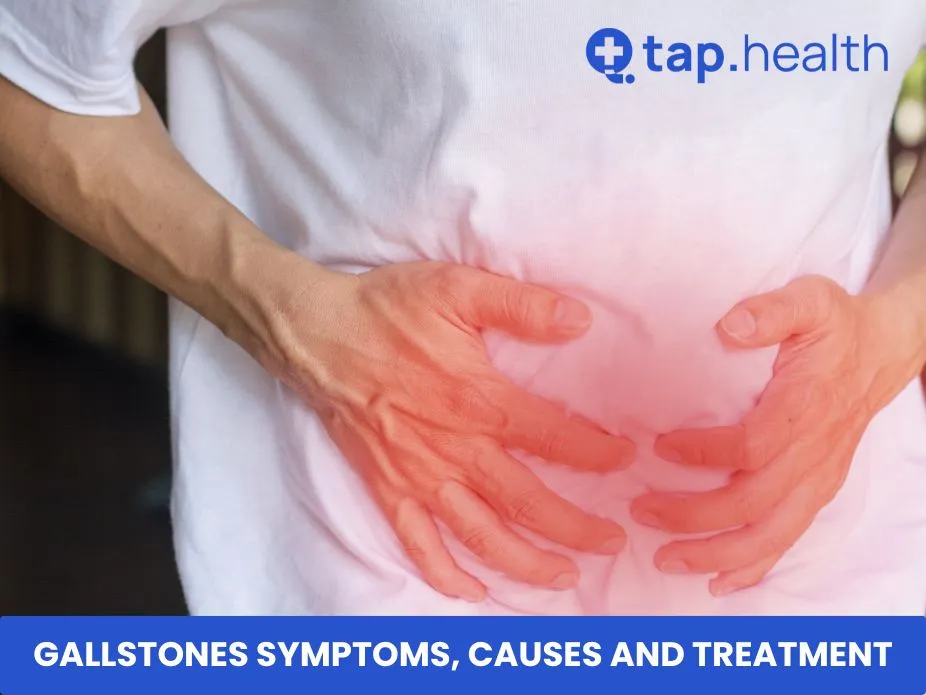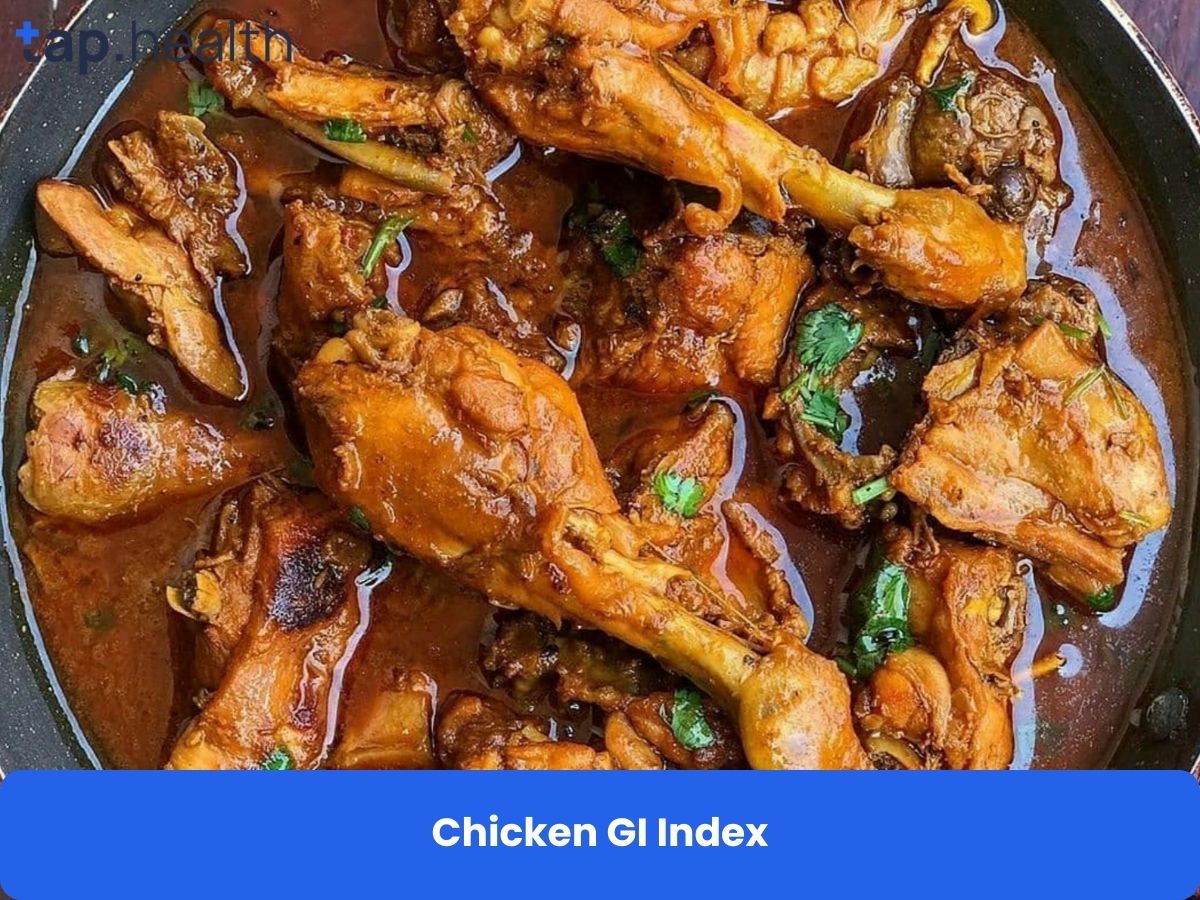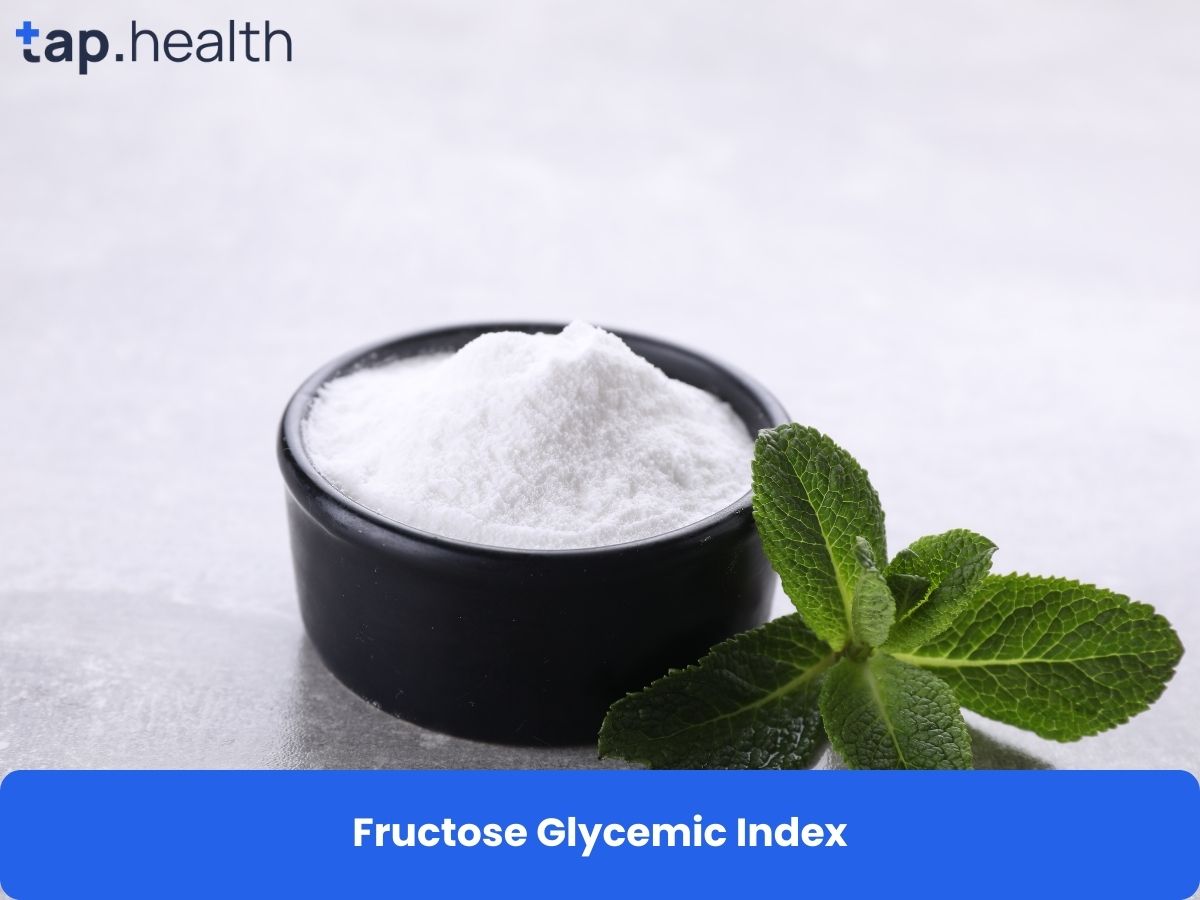Gallstones can be a painful and disruptive condition affecting many people worldwide. Understanding the symptoms, causes, and treatment options for gallstones is essential for managing this condition effectively. Let’s dive into what gallstones are, their symptoms, causes, how they are diagnosed, and treated, and how you can prevent them.
What are Gallstones?
Gallstones are small, hard particles that form in the gallbladder, a small organ located beneath the liver. The gallbladder stores bile, a digestive fluid produced by the liver. Gallstones can be as small as a grain of sand or as large as a golf ball. They can cause significant pain and discomfort, depending on their size and whether they block the bile ducts.
Common Symptoms of Gallstones
Many people with gallstones don’t experience any symptoms and may not even know they have them. However, when symptoms do occur, they can be quite uncomfortable. Common symptoms include:
1. Sudden, Intense Pain in the Upper Right Abdomen
One of the hallmark symptoms of gallstones is sudden, intense pain in the upper right part of the abdomen. This pain, also known as biliary colic, can vary in duration and intensity:
- Duration: The pain can last from a few minutes to several hours.
- Characteristics: The pain may come and go or remain constant, and it often starts suddenly.
- Trigger: It may be triggered by eating a fatty meal, which stimulates the gallbladder to release bile.
2. Pain Between Your Shoulder Blades
Pain from gallstones can sometimes be referred to other areas of the body, such as the back:
- Location: This pain is often felt between the shoulder blades.
- Type: It is usually a deep, aching pain rather than a sharp one.
- Cause: Referred pain occurs because the nerves that supply the gallbladder also supply these areas, leading to pain being felt in a different location.
3. Nausea and Vomiting
Nausea and vomiting are common symptoms that often accompany the abdominal pain caused by gallstones:
- Severity: These symptoms can range from mild to severe.
- Timing: They typically occur along with the onset of abdominal pain.
- Impact: Persistent nausea and vomiting can lead to dehydration and require medical attention.
4. Bloating
Feeling bloated or full after eating, even if you haven’t eaten much, is another symptom associated with gallstones:
- Sensation: You may feel uncomfortably full, gassy, or swollen in the abdomen.
- Cause: Bloating can occur due to impaired digestion and bile flow caused by gallstones blocking the bile ducts.
5. Indigestion
Gallstones can cause chronic indigestion and discomfort after meals:
- Symptoms: Indigestion may include heartburn, belching, and a feeling of fullness or discomfort in the upper abdomen.
- Timing: Symptoms often worsen after eating, especially fatty or greasy foods.
- Chronic Nature: Persistent indigestion can be a sign of gallstones obstructing the normal flow of bile.
Less Common Symptoms
In addition to the common symptoms, there are less common symptoms that can also indicate the presence of gallstones. These include:
Fever and Chills
These symptoms may indicate an infection in the gallbladder. If you experience fever and chills along with abdominal pain, it is important to seek medical attention promptly, as this could signify a serious infection requiring immediate treatment.
Yellowing of the Skin and Eyes (Jaundice)
Jaundice occurs when a gallstone blocks the bile duct, preventing bile from reaching the intestines. This causes bilirubin to build up in the blood, yellowing the skin and eyes. Jaundice is a significant sign of bile duct obstruction and should be evaluated by a healthcare provider.
Dark Urine and Light-Colored Stools
Changes in urine and stool colour can be a sign of bile duct obstruction. Dark urine and light-coloured stools indicate that bile is not properly flowing into the intestines. This symptom, along with jaundice, often points to a blockage that needs medical attention.
Causes of Gallstones
Gallstones can form for several reasons. Some of the most common causes include:
1. Excess Cholesterol in Bile
One of the primary causes of gallstones is an excess of cholesterol in bile. Normally, bile contains enough chemicals to dissolve the cholesterol excreted by the liver. However, when there is too much cholesterol, it can form crystals that eventually grow into stones.
- Mechanism: The liver excretes more cholesterol than the bile can dissolve, leading to the formation of solid particles.
- Result: These particles can gradually combine to form larger stones.
- Risk Factors: Obesity, high-fat diets, and certain medications can increase cholesterol levels in bile.
2. Excess Bilirubin in Bile
Bilirubin is a chemical produced when the body breaks down red blood cells. High levels of bilirubin in bile can also lead to gallstone formation. This can occur due to certain medical conditions.
- Mechanism: Conditions such as liver cirrhosis, biliary tract infections, and some blood disorders can cause the liver to produce too much bilirubin.
- Result: Excess bilirubin can cause the bile to become supersaturated, leading to the formation of pigment stones.
- Risk Factors: Chronic hemolytic anemia, liver diseases, and infections of the bile ducts increase bilirubin levels.
3. Infrequent Emptying of the Gallbladder
The gallbladder needs to empty its bile regularly to function properly. If it does not empty completely or often enough, the bile can become overly concentrated, leading to the formation of gallstones.
- Mechanism: Infrequent emptying of the gallbladder causes bile to remain in the gallbladder for too long, allowing the substances in the bile to crystallize.
- Result: This can lead to the formation of cholesterol stones.
- Risk Factors: Conditions that affect gallbladder motility, such as pregnancy, fasting, and certain medical conditions, can result in infrequent emptying.
Diagnosis of Gallstones
If you have symptoms of gallstones, your doctor will likely perform a series of tests to diagnose the condition. These tests may include:
1. Ultrasound
Ultrasound is the most common and widely used test for diagnosing gallstones. This non-invasive procedure uses high-frequency sound waves to create images of your gallbladder. Here’s how it works:
- Procedure: A technician moves a handheld device called a transducer over your abdomen. The transducer emits sound waves that bounce off your organs and create images on a monitor.
- Advantages: Ultrasound is safe, painless, and does not use radiation. It is particularly effective at detecting gallstones and assessing gallbladder inflammation.
- Results: The images can show the presence of gallstones, their size, and the condition of the gallbladder wall.
2. CT Scan
A CT (Computed Tomography) scan provides detailed cross-sectional images of your abdominal organs, including the gallbladder. This test can help identify gallstones and other abdominal issues.
- Procedure: You lie on a table that slides into a large, donut-shaped machine. The machine takes multiple X-ray images from different angles, which a computer combines to create detailed images.
- Advantages: CT scans can provide more detailed information than standard X-rays and can detect complications such as blockages or infections.
- Results: The images can reveal the size, number, and location of gallstones, as well as any related abnormalities in the gallbladder or bile ducts.
3. MRI
Magnetic Resonance Imaging (MRI) uses magnetic fields and radio waves to produce detailed images of the body’s internal structures, including the bile ducts and gallbladder.
- Procedure: You lie on a table that slides into a large tube-like machine. The MRI machine generates detailed images using magnetic fields and radio waves.
- Advantages: MRI is non-invasive and does not use ionizing radiation. It is particularly useful for visualizing soft tissues and can provide detailed images of the bile ducts and gallbladder.
- Results: MRI can detect gallstones, bile duct obstructions, and inflammation, providing comprehensive information about gallbladder health.
4. Blood Tests
Blood tests are an important part of diagnosing and managing gallstones. They can help identify infections, jaundice, pancreatitis, or other complications associated with gallstones.
- Procedure: A healthcare professional draws a blood sample from your arm, which is then analyzed in a laboratory.
- Tests Included: Common blood tests for gallstone diagnosis include liver function tests, pancreatic enzyme tests, and complete blood counts.
- Advantages: Blood tests can detect signs of infection, inflammation, and liver or pancreatic dysfunction.
- Results: Abnormal results may indicate the presence of gallstones or related complications, prompting further diagnostic imaging.
15 Treatment Options for Gallstones
Treatment for gallstones depends on the severity of your symptoms and the size and location of the stones. Here are 15 treatment options:
1. Watchful Waiting
If your gallstones aren’t causing any symptoms, your doctor might recommend a “watchful waiting” approach. This involves monitoring your condition without immediate intervention. Regular check-ups will ensure that any changes or developments are caught early.
2. Pain Relief
For mild pain caused by gallstones, over-the-counter pain relievers such as ibuprofen can be effective. These medications help manage pain and inflammation but should be used as directed to avoid side effects.
3. Dietary Changes
Eating a healthy diet can play a crucial role in preventing and managing gallstones. Focus on a diet low in fat and high in fiber. Foods rich in fiber include fruits, vegetables, whole grains, and legumes. Reducing the intake of fatty, fried, and processed foods can help reduce the risk of gallstone formation.
4. Oral Dissolution Therapy
Medications such as ursodeoxycholic acid can help dissolve cholesterol gallstones over time. This therapy is most effective for small, cholesterol-based stones and requires a prescription from a healthcare provider. It can take months or even years for the stones to dissolve completely.
5. Extracorporeal Shock Wave Lithotripsy (ESWL)
This non-invasive procedure uses shock waves to break gallstones into smaller pieces, which can then pass more easily through the bile ducts and be eliminated from the body. ESWL is typically used for patients who cannot undergo surgery and for stones that are not too large.
6. Endoscopic Retrograde Cholangiopancreatography (ERCP)
ERCP is a procedure that combines the use of endoscopy and X-ray to remove gallstones from the bile ducts. An endoscope is passed through the mouth, esophagus, and stomach into the small intestine. A contrast dye is then injected into the bile ducts, and X-rays are taken to locate the stones. The endoscope is then used to remove or break up the stones.
7. Laparoscopic Cholecystectomy
This minimally invasive surgery involves the removal of the gallbladder through small incisions in the abdomen. A laparoscope (a small, lighted camera) and surgical instruments are inserted through these incisions to perform the surgery. Recovery time is typically shorter compared to open surgery, and there is less postoperative pain.
8. Open Cholecystectomy
In cases where laparoscopic surgery is not possible, an open cholecystectomy may be performed. This traditional surgery involves a larger incision in the abdomen to remove the gallbladder. It is generally reserved for more complicated cases or when the patient has certain medical conditions.
9. Antibiotics
If there is an infection associated with gallstones, antibiotics may be necessary. Infections can occur if the gallstones block the bile ducts, leading to inflammation and bacterial growth. Prompt treatment with antibiotics can prevent serious complications.
10. Bile Salts
Oral bile salts can help dissolve small gallstones over time. This method is similar to oral dissolution therapy and is often used for patients who cannot undergo surgery. Bile salts work by gradually breaking down the stones, making them easier to pass.
11. Low-Fat Diet
Maintaining a low-fat diet can help manage symptoms of gallstones and prevent the formation of new stones. Avoiding fatty foods reduces the workload on the gallbladder, allowing it to function more efficiently and reducing the risk of stone formation.
12. Hydration
Drinking plenty of water is essential to prevent bile from becoming too concentrated, which can lead to gallstone formation. Staying well-hydrated helps maintain the proper consistency of bile and supports overall digestive health.
13. Regular Exercise
Regular physical activity can help prevent the formation of gallstones. Exercise helps regulate body weight and improves metabolism, reducing the risk of gallstone development. Aim for at least 30 minutes of moderate exercise most days of the week.
14. Avoid Rapid Weight Loss
Losing weight too quickly can increase the risk of developing gallstones. Rapid weight loss can cause an imbalance in the bile composition, leading to stone formation. Aim for a gradual weight loss of 1-2 pounds per week to minimize this risk.
15. Medical Management
In some cases, doctors may use a combination of treatments to manage gallstones effectively. This could involve a combination of dietary changes, medications, and minimally invasive procedures tailored to the patient’s specific needs and health condition.
Preventing Gallstones
While not all gallstones can be prevented, certain lifestyle changes can reduce your risk. Here are some tips to help prevent gallstones:
1. Maintain a Healthy Weight
Obesity is a significant risk factor for gallstones. Excess body weight can increase the cholesterol in your bile, leading to stone formation. Maintaining a healthy weight through a balanced diet and regular exercise is crucial for reducing this risk.
2. Eat a Balanced Diet
A diet high in fiber and low in unhealthy fats can help prevent gallstones. Here’s how to structure your diet for optimal gallbladder health:
- High Fiber Foods: Include plenty of fruits, vegetables, whole grains, and legumes in your diet. These foods help keep your digestive system running smoothly and can prevent the formation of gallstones.
- Healthy Fats: Opt for healthy fats found in fish, nuts, seeds, and avocados. Avoid trans fats and limit saturated fats, which are found in fried foods, baked goods, and fatty cuts of meat.
- Lean Proteins: Incorporate lean protein sources like chicken, turkey, fish, and plant-based proteins. These are lower in fat and better for your overall health.
3. Exercise Regularly
Regular physical activity is important for maintaining a healthy weight and reducing the risk of gallstones. Aim for at least 30 minutes of moderate exercise most days of the week. Activities such as walking, jogging, swimming, or cycling can help you stay fit and support healthy digestion.
4. Avoid Rapid Weight Loss
- Balanced Meals: Eat a variety of foods to get all the nutrients your body needs. Avoid crash diets or extremely low-calorie diets.
- Regular Meals: Don’t skip meals, as this can lead to overeating later. Regular, balanced meals help maintain stable blood sugar levels and prevent overeating.
- Mindful Eating: Pay attention to what and how much you eat. Avoid distractions while eating, and take the time to enjoy your food.
Losing weight too quickly can increase your risk of developing gallstones. When you lose weight rapidly, your liver secretes extra cholesterol into the bile, which can form stones. A gradual weight loss of 1-2 pounds per week is the safest approach. Here are some tips for healthy weight loss:
When to See a Doctor
If you experience any of the following symptoms, you should see a doctor as soon as possible:
- Severe abdominal pain: Especially if it lasts more than a few hours.
- Fever and chills: These could indicate an infection in the gallbladder.
- Jaundice: Yellowing of the skin and eyes should be evaluated by a doctor.
- Persistent nausea and vomiting: These symptoms can be a sign of gallstones blocking the bile ducts.
FAQ on Gallstones Symptoms, Causes and Treatment
1. What are the main symptoms of gallstones?
The main symptoms of gallstones include sudden, intense pain in the upper right abdomen, pain between the shoulder blades, nausea, vomiting, bloating, and indigestion.
2. How are gallstones diagnosed?
Gallstones are typically diagnosed using ultrasound, CT scans, MRI, and blood tests.
3. What causes gallstones?
Gallstones can form due to excess cholesterol or bilirubin in bile, or infrequent emptying of the gallbladder.
4. What are some treatment options for gallstones?
Treatment options for gallstones include watchful waiting, pain relief, dietary changes, oral dissolution therapy, ESWL, ERCP, laparoscopic cholecystectomy, open cholecystectomy, antibiotics, bile salts, low-fat diet, hydration, regular exercise, avoiding rapid weight loss, and medical management.
5. Can gallstones be prevented?
While not all gallstones can be prevented, maintaining a healthy weight, eating a balanced diet, exercising regularly, avoiding rapid weight loss, and staying hydrated can help reduce the risk.
By understanding gallstones and how to manage them, you can take steps to maintain your health and well-being. If you have any concerns about gallstones, consult with your healthcare provider for personalized advice and treatment options.



